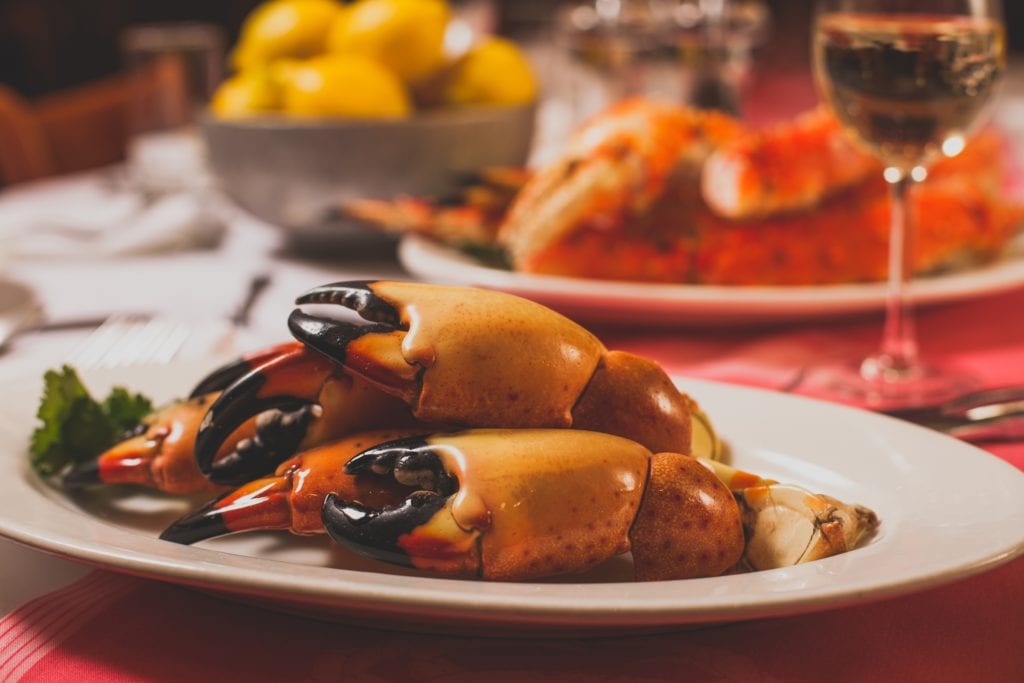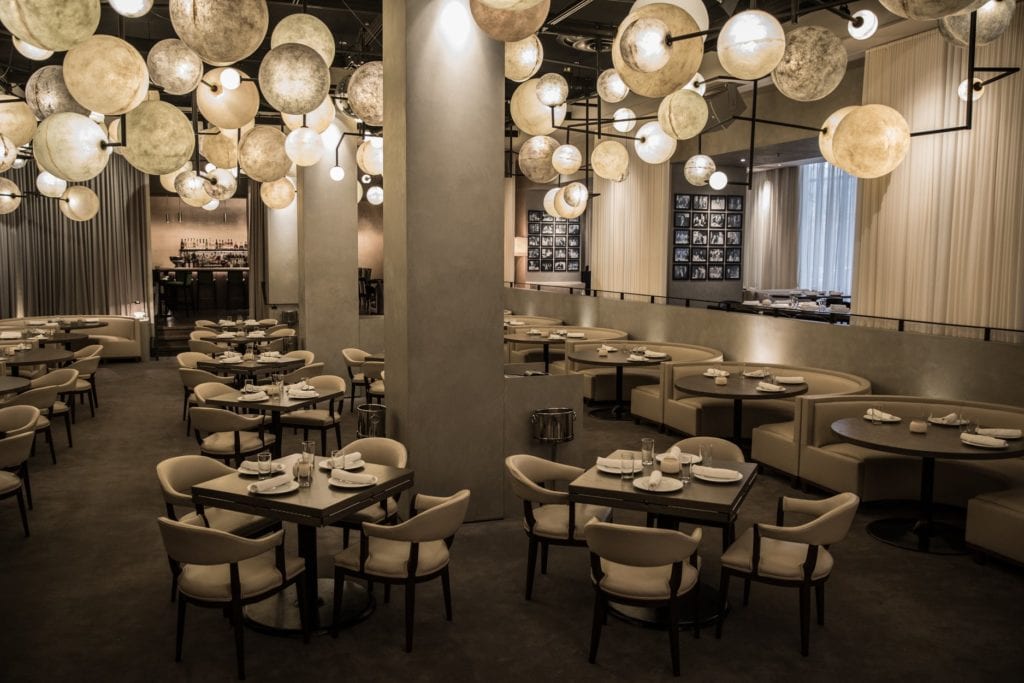Innovative Restaurateurs: Guiding Lettuce Entertain You’s Explosive Growth

Photo Caption: The bar at Shaw’s Crab House in Chicago.
Skift Take
Chicago’s most notable restaurant group now has 120 restaurants in nine states, but it is picky about the concepts it embraces.
If you’ve dined in restaurants across Chicago anytime in the last 48 years, it’s likely that one of them was owned by Lettuce Entertain You Enterprises. Name a category, and the restaurant group run by the Melman family has some kind of presence in it.
There’s fast casual, with Wow Bao, featuring Asian buns and dumplings, and Big Bowl, offering noodles and curries. There’s also casual Spanish cuisine, with Café Ba-Ba-Reeba, which first introduced many Chicagoans to tapas. There’s even upscale dining, in the form of RPM Steak and Italian restaurants.

R.J. Melman
And Lettuce is no longer simply a fixture in the Windy City. Its outlets have spread to nine states, and Wow Bao is now in airports like Reagan National in Washington, D.C.
Lettuce president, R.J. Melman, part of the family’s second generation to run the company, said there’s no master growth plan in place to expand the empire. Instead, Melman explained, the privately held group is enjoying the rare luxury of doing pretty much what it wants.
“Want to do fine dining? Let’s do it,” Melman said. “Want to do quick casual? Let’s do it.”
That strategy has led to 60 different restaurant concepts, 120 restaurants and 7,500 employees, as well as a 2015 James Beard Lifetime Achievement Award for Melman’s father, Richard. The company currently operates in nine states, including a storefront in Reagan National Airport in Washington, D.C.
A Trip Down Memory Lane
Richard Melman launched the group’s first restaurant, R.J. Grunts, in 1971 with his partner, Jerry Orzoff. (The location was named for the two men, plus Orzoff’s girlfriend.)
R.J. Grunts, which featured one of the country’s first salad bars, came along as restaurants across the country were beginning to experiment with new styles of service and cuisine.

The salad bar at R.J. Grunts.
More distinct tweaks to new restaurants soon followed. As a result, Lettuce became a training ground for dozens of chefs, front of the house managers, and staff that have gone on to work at other restaurants in Chicago, and elsewhere, over the years.
R.J. Grunts was a playground for Melman, his brother Jerrod, and sister Molly, all of whom are now partners in the family business. “I have amazing memories,” he said. “I got to go to openings and play in the [walk-in] coolers.”
At Shaw’s Crab House, a fixture with business diners that opened in 1985, the young Melmans recalled being fascinated by the live lobsters swimming in fish tanks. “I brought home a bowl of oysters and crabs as a pet, and put them in fresh water. A day later, they had all died,” R.J. said, laughing.

Shaw’s Crab House.
In the 1980s, his father gave him his first job as a boy at Ed Debevic’s, a retro diner in Chicago’s River North neighborhood. “I wanted to buy a toy camper, and my dad said I had to have a job,” he said. Melman was paid 10 cents an hour working as a host and seating customers.
The job wasn’t intended to teach him how to run a restaurant, but Melman said he soaked up his parents’ expertise by watching them in action. “I’ve always seen that my parents cared about people,” he said.
Early on, his father had the opportunity to take R.J. Grunt’s national, with a chain similar to Hard Rock Cafe. “He didn’t want to do that. He didn’t love travel. He wanted to focus on Chicago,” Melman said.
A New Vision of Expansion
At the moment, Lettuce is working on one of its largest projects to date in Chicago, a four-story space on the Chicago River. It’s part of a $50 million redevelopment of a building that once housed Quaker Oats.
Lettuce’s restaurant spaces in Chicago cost between $300 and $800 per square foot to operate, depending on location and type of cuisine, said Melman. (The company does not disclose its revenue figures.)
Chicago has never built up its riverfront in the same ways as cities such as San Antonio, Reno, and Boston. “It’s an area that’s known for turning green in March” when it is dyed for St. Patrick’s Day, “and not much else,” Melman said.
The new space, called RPM On The Water, will house three separate Lettuce operations, including an events space. The “R” in RPM stands for Bill Rancic, winner of the first Apprentice program, who has since become a property and restaurant developer.

The dining room at Booth One, one of the company’s newer restaurant concepts.
Melman said that Lettuce’s partners have been crucial to its success. But the top criteria for joining forces isn’t cuisine or financial clout. Instead, it is “talented people who are good at developing others,” he said.
But Lettuce, like many restaurant groups, is suffering from a labor shortage. In 2009, when Lettuce opened a restaurant in Los Angeles, it advertised for applicants and got 1,000 people. Today, five or six people might respond to a job advertisement at a Lettuce-owned restaurant.
“[The low unemployment rate] is great for the U.S., in general, but it makes it hard to find people,” Melman said.
The company is now looking at opening new restaurants in Florida, Texas, Las Vegas, and Los Angeles as well, with plans of opening up to two restaurants per year over the next few years.
Melman says Lettuce keeps “idea files” on different concepts, sketching out what a place would look like, dishes for its menu, and how big it needs to be. Then the company looks for a space that can fit the idea, and decides whether the idea can generate enough revenue to be profitable in that setting.

A spread at Wow Bao, a franchised chain owned by the company.
A Franchise Mindset
Because Lettuce has grown so much, local Chicago food writer Michael Nagrant thinks the company is moving away from individual restaurant concepts to those that seem like “the franchise is already in mind at launch.”
Nagrant said that Lettuce is focused on the types of restaurants that can create buzz and multiple Instagram posts. “Lettuce’s innovation is in refinement of the club-staurant genre. They’re leaders in this game,” he added.
Personally, Melman says he’s craving a Thai restaurant for the group. But, he said, “The future for us is a lot like the past looked like. We’ll do new concepts, and grow existing concepts. There’s no shortage of ideas. It’s just a matter of time.”
Skift Table’s Innovative Restaurateurs series profiles the leading names behind mid-size independent restaurant groups nationwide. To read past installments in the series, click here.
Micheline Maynard is a journalist and author who worked at The New York Times and NPR. Her food writing has appeared in the Times, and on Forbes, Epicurious and CityLab.

The travel industry's top event returns this fall.
September 16-18, 2025 - NEW YORK CITY
